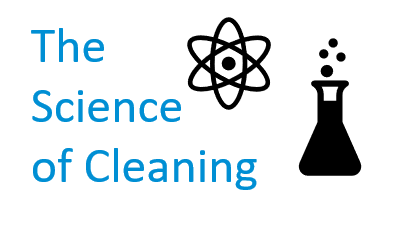 Cleaning is complex, with multiple parameters that must be controlled. They can either enable—or inhibit—the effectiveness of your cleaning process. AAMI ST79 notes the purpose of cleaning and why it is known as the critical first step in instrument reprocessing.
Cleaning is complex, with multiple parameters that must be controlled. They can either enable—or inhibit—the effectiveness of your cleaning process. AAMI ST79 notes the purpose of cleaning and why it is known as the critical first step in instrument reprocessing.
“The first and most important step in reprocessing reusable medical devices is thorough cleaning and rinsing. Cleaning removes microorganisms and other organic and inorganic materials… Rinsing removes detergent and other residues that might interfere with subsequent processes.”
Because so much of the cleaning process cannot be seen, it’s important to understand the critical parameters and the underlying science in order to effectively manage the outcomes. Cleaning requires mechanical action, high purity water, proper detergent dosing and concentration, correct temperature and contact time, and validated, non-hazardous instrument chemistries.
The science of detergents
AAMI ST79 7.4.1 directs sterile processing personnel to use a cleaning solution that is compatible with the device and to follow the cleaning product manufacturer’s written IFU for proper dilution, concentration, temperature, and contact time. Such cleaners need to have excellent detergency, low surface tension, good chelating action, and rinse freely.
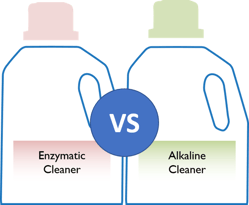
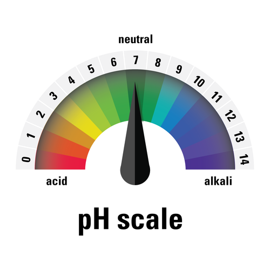 For instance, SteriTite containers must be cleaned with pH neutral cleaners. Surgical instruments also benefit from pH-neutral cleaners, and they may be even more effective. Cleaners that are not pH neutral are caustic and corrosive (even if they’re labeled aluminum safe!) and can lead to a range of detrimental effects:
For instance, SteriTite containers must be cleaned with pH neutral cleaners. Surgical instruments also benefit from pH-neutral cleaners, and they may be even more effective. Cleaners that are not pH neutral are caustic and corrosive (even if they’re labeled aluminum safe!) and can lead to a range of detrimental effects:
- Compromise the passive layer of instruments and medical devices
- Lead to pitting, staining, and rusting
- Cause colored anodized devices to bleach, fade, and discolor
- Pose a safety hazard to patients and staff
- Over time, destroy medical devices
Case Solutions® Instrument Chemistries are pH neutral, designed to work together as an integrated system, and are safe for instruments, containers, personnel, patients, and the environment. Use with reverse osmosis (RO) water for best results.
The science of water
The Association for the Advancement of Medical Instrumentation (AAMI) and the Association of periOperative Registered Nurses (AORN) both recommend using critical water in the final cleaning step (see AAMI TIR34:2007). Surgical instrument cleaning requires high purity, low endotoxin water. Critical water is extensively treated, usually by a multistep treatment process. Distilled water and reverse osmosis (RO) water qualify as critical water.
Tap water may contain toxins, hazardous chemicals, hard water ions, and microorganisms. Water softener systems require consistent and routine maintenance and can create issues in medical device reprocessing leading to corrosion and pitting of surgical devices. Deionization (DI) does not remove all minerals nor is it effective for removal of microorganisms. Both softeners and DI require replenishment of salt or resins for removal of minerals or contaminants. RO utilizes filtration.
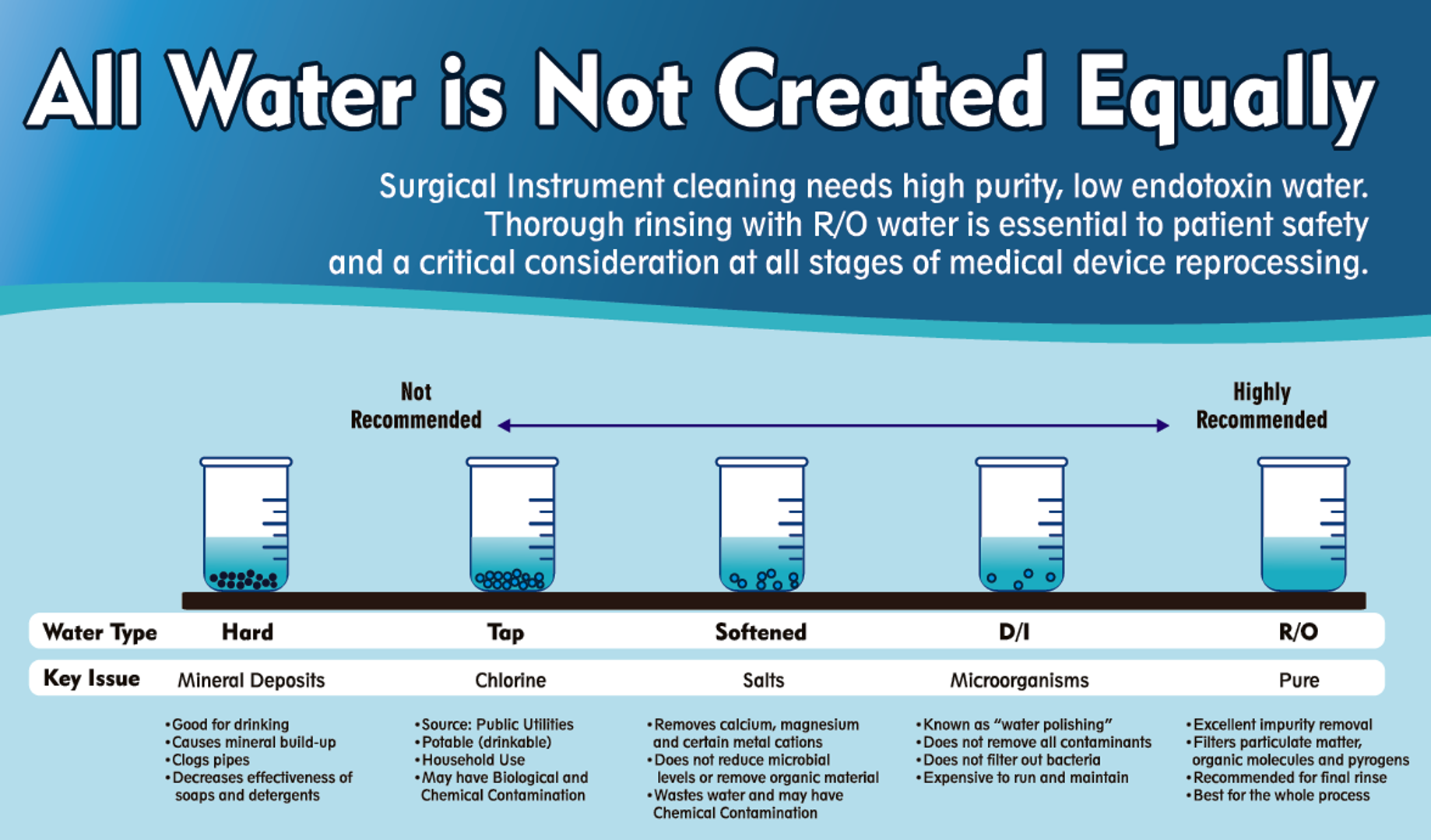
Water works in conjunction with the proper detergents, which may include enzymes, to loosen, lift, and remove contamination from surgical instruments. Poor water quality can inactivate detergents and lead to substandard results. Contaminants can also cause damage to instruments.
Facilities should conduct regular maintenance and ongoing water quality monitoring to ensure water systems are performing to standards and to prevent adverse patient safety effects.
Follow the instructions
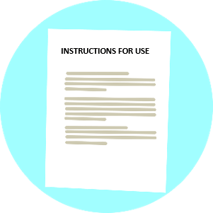
Cleaning parameters in the manufacturers’ IFUs, including time or duration of each step, are requirements for effective outcomes. Your best bet for patient safety is to process instruments by the book and use validated, science-based cleaners, right from the start.
For all these reasons, facilities that are using caustic cleaning products should assess converting to pH neutral instrument chemistries. The Case Medical team has formulated an entire line of instrument chemistries to effectively clean medical devices while being responsible stewards of the environment and the safety of healthcare personnel. Case Medical is a long-time U.S. EPA Safer Choice partner (since 2011) and a three-time Safer Choice Partner of the Year.
Read the label
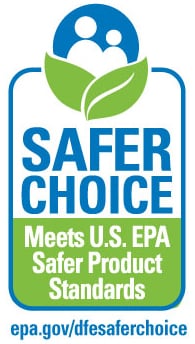 Case Medical’s instrument cleaners and lubricant proudly display the U.S. EPA Safer Choice label. Originally designed to decontaminate and preserve the company’s SteriTite containers, you can use our validated instrument chemistries to obtain best results for all your reprocessing needs.
Case Medical’s instrument cleaners and lubricant proudly display the U.S. EPA Safer Choice label. Originally designed to decontaminate and preserve the company’s SteriTite containers, you can use our validated instrument chemistries to obtain best results for all your reprocessing needs.
The U.S. EPA's Safer Choice label attests to the superior safety of the products and equal or better effectiveness compared to others in the comparison class. Contact us at [email protected] to get more information about optimizing your cleaning process with Case Solutions® and SuperNova® super concentrated cleaners.
Need education CEs?
Register to join us this Thursday, May 6 for "The Case for Rigid Containers" live webinar.





